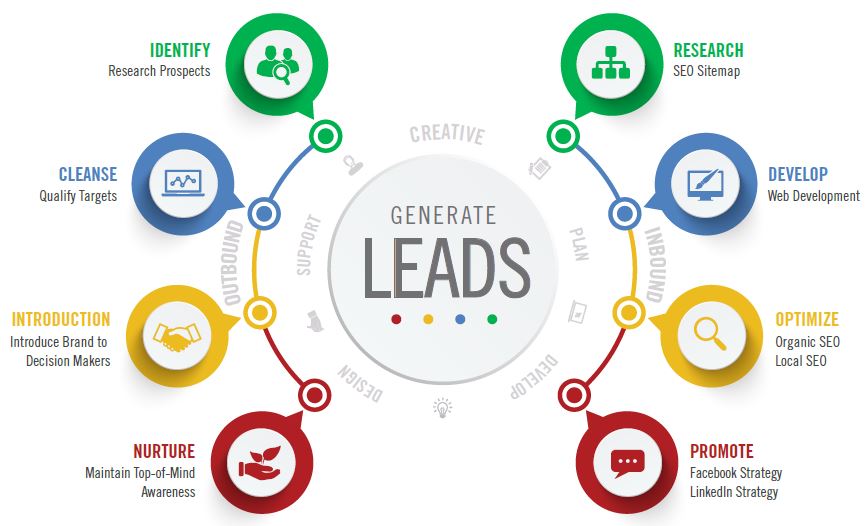The Basics of Lead Generation
Generating leads is a crucial part of any business’s marketing strategy. It’s the process of attracting and converting strangers and prospects into someone who has indicated interest in your company’s product or service. But what exactly does lead generation entail, and how can businesses effectively implement it? Let’s dive into the basics of lead generation, breaking it down into manageable and engaging parts.
Understanding Lead Generation
What is Lead Generation?
Lead generation is the process of attracting and capturing interest in a product or service to develop a sales pipeline. It involves using various marketing strategies to capture the interest of potential customers (leads) and nurturing them towards making a purchase.
Why is Lead Generation Important?
Lead generation is vital because it helps businesses to:
– Expand their customer base: By continuously attracting new leads, businesses can grow their pool of potential customers.
– Increase revenue: More leads can translate into more sales, boosting the company’s bottom line.
– Target the right audience: Effective lead generation strategies help in reaching the right audience who are more likely to convert into customers.

Key Components of Lead Generation
Lead Magnets
A lead magnet is an incentive that marketers offer to potential buyers in exchange for their contact information. Examples include eBooks, whitepapers, free trials, and webinars. A good lead magnet should be valuable, relevant, and solve a problem for the potential lead.
Landing Pages
Landing pages are standalone web pages created specifically for a marketing or advertising campaign. They are designed with a single focus or goal, known as a call to action (CTA). Effective landing pages are crucial for converting visitors into leads.
Forms
Forms are an essential part of lead generation as they collect the contact information of potential leads. These forms are usually found on landing pages and should be straightforward to fill out to avoid losing potential leads.
Call to Action (CTA)
A CTA is a prompt on a website that tells the user to take some specified action. Examples include “Sign Up Now,” “Download Free eBook,” or “Get Started Today.” Effective CTAs are clear, compelling, and action-oriented.

Strategies for Effective Lead Generation
Content Marketing
Creating valuable content is one of the most effective ways to generate leads. Blog posts, infographics, videos, and podcasts can attract potential customers by providing useful information that solves their problems.
Search Engine Optimization (SEO)
SEO involves optimizing your website and content to rank higher in search engine results pages (SERPs). By targeting relevant keywords, businesses can attract organic traffic, which can then be converted into leads.
Social Media Marketing
Social media platforms are powerful tools for lead generation. Businesses can use platforms like Facebook, LinkedIn, and Instagram to engage with potential customers, share valuable content, and drive traffic to their landing pages.
Email Marketing
Email marketing is a direct way to communicate with potential leads. By sending targeted emails to prospects, businesses can nurture leads through personalized content, offers, and updates.
Paid Advertising
Paid ads on platforms like Google, Facebook, and LinkedIn can help attract leads quickly. These ads can be targeted based on demographics, interests, and behaviors to reach the right audience.

The Lead Generation Process
Identify Your Target Audience
Understanding who your potential customers are is the first step in the lead generation process. Create detailed buyer personas to identify the characteristics, needs, and behaviors of your target audience.
Create Compelling Content
Develop content that addresses the pain points and interests of your target audience. This content should be valuable, engaging, and aligned with the interests of your potential leads.
Promote Your Content
Use various channels to promote your content, including social media, email marketing, and SEO. The goal is to attract as many potential leads as possible to your landing pages.
Capture Leads
Use lead magnets, forms, and CTAs on your landing pages to capture the contact information of potential leads. Make sure the process is simple and user-friendly.
Nurture Leads
Once you’ve captured leads, it’s essential to nurture them through the sales funnel. Use email marketing, personalized content, and targeted offers to build relationships and move leads toward making a purchase.
Measure and Optimize
Continuously monitor the performance of your lead generation strategies. Use analytics tools to track metrics like conversion rates, click-through rates, and ROI. Optimize your strategies based on the data to improve results.
Challenges in Lead Generation
Generating High-Quality Leads
One of the biggest challenges is attracting leads who are genuinely interested in your product or service. High-quality leads are more likely to convert into paying customers.
Maintaining Consistent Lead Flow
It’s essential to have a steady stream of leads coming into your sales pipeline. Inconsistent lead flow can disrupt your sales process and affect your revenue.
Lead Nurturing
Converting leads into customers requires effective nurturing. This involves regular communication, providing valuable content, and addressing their concerns throughout the buyer’s journey.

Future Trends in Lead Generation
Artificial Intelligence (AI)
AI can significantly enhance lead generation efforts. AI-powered tools can analyze vast amounts of data to identify potential leads, predict behaviors, and personalize marketing efforts.
Chatbots
Chatbots are becoming increasingly popular for lead generation. They can engage with visitors in real time, answer questions, and capture contact information.
Video Marketing
Video content is a powerful tool for engaging potential leads. Businesses are increasingly using videos for product demonstrations, testimonials, and educational content to attract and convert leads.
Conclusion
Lead generation is a fundamental aspect of any successful marketing strategy. By understanding the basics and implementing effective strategies, businesses can attract and convert potential customers, driving growth and revenue. Whether you’re using content marketing, SEO, social media, or paid advertising, the key is to provide value and build relationships with your audience.